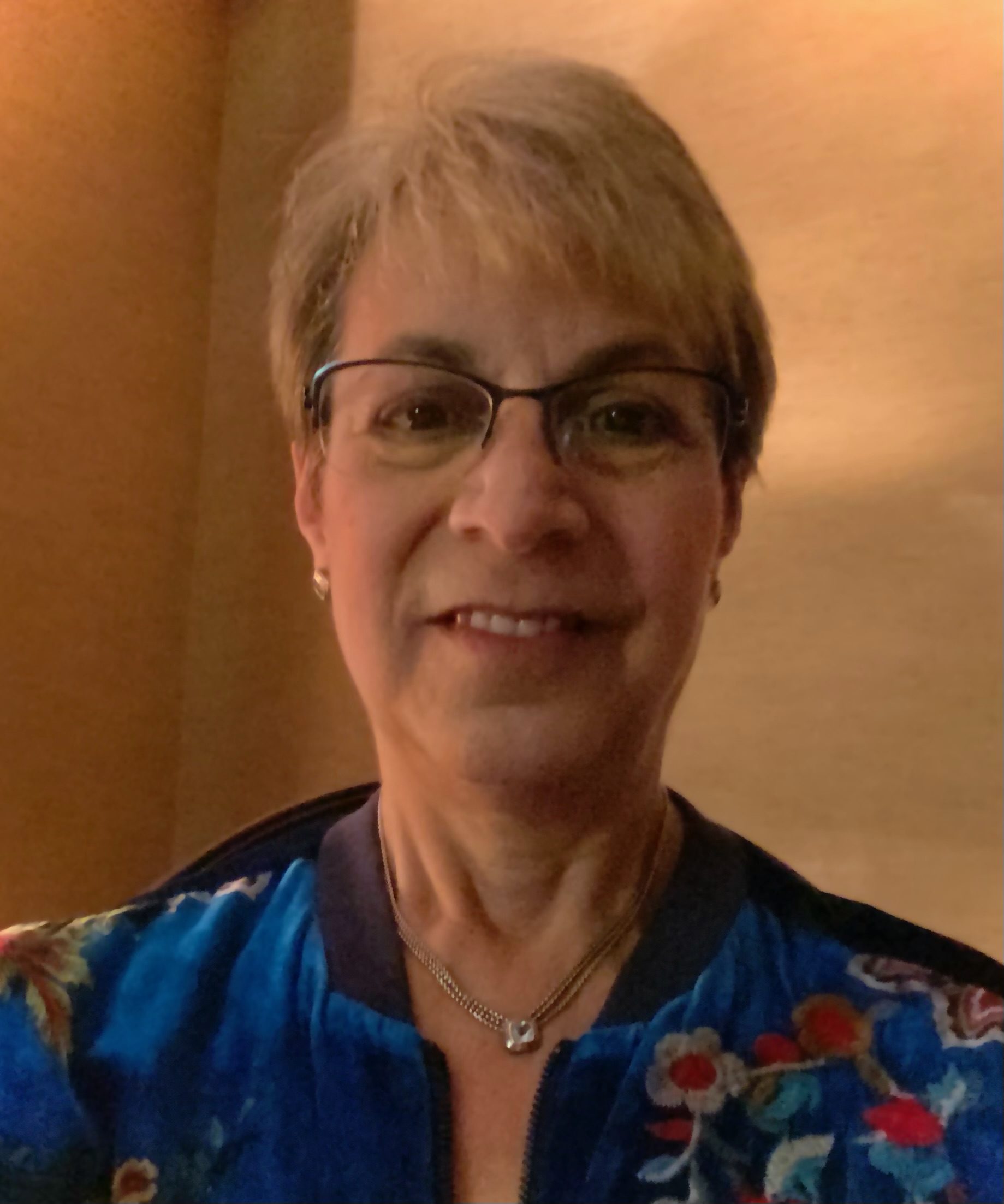College Bound: Affirmative Action in College Admissions

Audio By Carbonatix

Adrienne Leinwand Maslin. Courtesy photo
We-Ha.com will be publishing a series of essays/blogs/reflections on the issue of going to college – primarily a set of thoughts and musings, along with some practical advice, intended to support students and parents as they embark on this journey. While many of our readers are experts in this topic, many others are less knowledgeable and have little outside support. We hope this is helpful to all readers as they go through the various stages of getting into and getting something out of college.
By Adrienne Leinwand Maslin
Having spent the early part of my career in college admissions and then affirmative action, and having worked closely with someone who was a key player in Regents of the University of California v. Bakke, the 1978 case about affirmative action and the use of racial quotas heard by the U.S. Supreme Court, I have been very interested in all cases on affirmative action in admissions that have been brought before the Court since that time.
In the Bakke case, the Supreme Court rejected the use of racial quotas in admissions but reaffirmed the use of race as one of many criteria that could be employed to admit students to a college or university. The 5-4 majority in that case believed that colleges and universities have a “compelling interest” in developing a student body that is diverse and that “race or ethnic background may be deemed a ‘plus’ in a particular applicant’s file (Justice Lewis Powell, Regents of the University of California v. Bakke, 1978).”
Since the time of Bakke, the Supreme Court has heard several other cases involving affirmative action in higher education. In 2003, the Court heard two cases brought by students at the University of Michigan. In Gratz v. Bollinger (Lee Bollinger was the president of the University of Michigan at the time and is currently president of Columbia University) two undergraduate applicants who were denied admission sued the University over their point-based admission process that automatically gave 20 of 150 possible points to applicants from underrepresented minority groups. This point-based system was found to be unconstitutional because the 20 additional points were applied evenly to all minorities rather than on an individual basis.
In Grutter v. Bollinger – Barbara Grutter was a law school applicant who was denied admission by the University of Michigan – the Supreme Court affirmed that race could be considered as long as it was done in an individualized way as was the approach taken in the law school. In its opinion, the Court also expressed the concept of a college’s need to achieve diversity in its student body.
Fisher v. University of Texas was heard by the Supreme Court in both 2013 and 2016. Abigail Fisher was a white undergraduate applicant who was rejected from UT on the basis, she claimed, of her race, thus violating her constitutional rights. In the first case, known as Fisher I, the Supreme Court remanded the case back to the United States Court of Appeals for the 5th Circuit, saying that the lower court had not held UT’s admissions policies to a standard of “strict scrutiny.” The U.S. Court of Appeals for the 5th Circuit, after additional review, upheld the admissions policies of the University of Texas and out of this, Fisher II was born.
Fisher petitioned the U.S. Supreme Court to take her case up again, believing the United States Court of Appeals for the 5th Circuit did not truly apply a standard of strict scrutiny and did not state why a race-neutral admissions plan would not achieve the desired goal of reducing the “degree of disparity” between its enrollment of minority students and the number of minorities in the state. The result of Fisher II was that the Supreme Court upheld UT’s admissions program but stipulated that the university has “an ongoing obligation to engage in constant deliberation and continued reflection regarding its admissions policies. (Justice Anthony Kennedy, Fisher v. University of Texas, 2016.)”
On October 31 of this year, the Supreme Court took up two other cases regarding affirmative action. In Students for Fair Admissions v. Harvard and Students for Fair Admissions v. University of North Carolina the challengers requested the Court to reverse previous decisions on affirmative action so that race may not be considered in college admissions decisions. Harvard and UNC maintained that race is one of many factors considered when making admissions decisions and that its use is critical to obtaining and maintaining a diverse student body. We’ll have to wait until June to learn the outcome.
Why do we have affirmative action in college admissions, anyway? When affirmative action programs were first developed in the 1960s the purpose was to address racial inequality and the effects of our country’s history of slavery and racism. Today, colleges justify their desire to create diversity among their faculty, staff, and students as a way to support and enhance the educational mission of their institutions. Certainly, as is shown by the nature and number of cases brought before the United States Supreme Court, and by the even larger number of cases brought before lower courts, the way “to do” affirmative action remains murky. Does the benefit accrued by one group mean harm to another? Is reverse discrimination – typically defined as “withholding opportunities from members of majority groups, as in college admissions or employment, as part of a policy intended to remedy earlier discrimination against minorities” – a real thing? Is admissions a zero-sum game where one applicant’s win is another one’s loss? I’ll give you my thoughts on that later in the column.
First, however, I do believe there are concrete educational benefits to attending a college with a diverse faculty, staff, and student body. So let’s take a look at what they are. The American Council on Education, a leading policy and advocacy organization for higher education prepared an inclusive statement in 2012. An abbreviated version, along with the link to the full statement, are below.
On the Importance of Diversity in Higher Education
America’s colleges and universities differ in many ways. Some are public, others are independent; some are large urban universities, some are two-year community colleges, and still others are small rural campuses. Some offer graduate and professional programs, others focus primarily on undergraduate education. Each of our more than 4,000 colleges and universities has its own specific and distinct mission. This collective diversity among institutions is one of the great strengths of America’s higher education system, and has helped make it the best in the world. Preserving that diversity is essential if we hope to serve the needs of our democratic society and of the increasingly global scope of the economy.
Similarly, many colleges and universities share a common belief, borne of experience, that diversity in their student bodies, faculties, and staff is important for them to fulfill their primary mission: providing a high-quality education. The public is entitled to know why these institutions believe so strongly that racial and ethnic diversity should be one factor among the many considered in admissions. The reasons include:
- Diversity enriches the educational experience. We learn from those whose experiences, beliefs, and perspectives are different from our own, and these lessons can be taught best in a richly diverse intellectual and social environment.
- It promotes personal growth and a healthy society. Diversity challenges stereotyped preconceptions; it encourages critical thinking; and it helps students learn to communicate effectively with people of varied backgrounds.
- It strengthens communities and the workplace. Education within a diverse setting prepares students to become good citizens in an increasingly complex, pluralistic society …
- It enhances America’s economic competitiveness. Sustaining the nation’s prosperity in the 21st century requires us to make effective use of the talents and abilities of all our citizens, in work settings that bring together individuals from diverse backgrounds and cultures.
American colleges and universities traditionally have enjoyed significant latitude in fulfilling their missions. Americans have understood that there is no single model of a good college, and that no single standard can predict with certainty the lifetime contribution of a teacher or a student.
Diversity on college campuses is not achieved through quotas. Nor does diversity justify or warrant admission of unqualified applicants. However, the diversity we seek and the future of the nation do require that colleges and universities continue to be able to reach out and make a conscious effort to build healthy and diverse learning environments that are appropriate for their missions. The success of higher education and the strength of our democracy depend on it.
ACE Board of Directors, June 2012
https://www.acenet.edu/Documents/BoardDiversityStatement-June2012.pdf
Several points stand out to me in the statement above. One, diversity is critical to the education of our students. Two, the affirmative action programs that colleges put in place to create more diverse campuses do not require the admission of unqualified students. Three, the use of quotas does not have a place in a college’s admissions and affirmative action policies. Four, which is reflective of the beliefs I expressed in previous columns in this paper, “there is no single model of a good college, and that no single standard can predict with certainty the lifetime contribution of a teacher or a student.”
To rephrase this a bit, a good college is a college that helps its students become educated adults, ready to assume their place in a world community. A good college is one that works hard to foster growth and success, and that provides its students with opportunities to grow in physical, intellectual, and emotional ways. Many colleges can contribute in these ways to a student’s growth, and rejection from a preferred college does not mean that opportunities for this kind of growth are now closed off. Further, there is no way to predict that a student who attends a particular college or a particular type of college will be successful in their career and life.
When I consider these points I think about my own experiences in college admissions. Where I worked, at Oberlin College, there was never a mandate to admit X number of students in a given year and not one student more. This is not how college admissions works and it is not how any college or university that I am familiar with works. College admissions directors are under considerable pressure to “get it right.” That is, to admit enough students that those who choose to attend will be sufficient for the college to have a student body of the most appropriate size and, of course, to make its budget. (In other articles I discussed the concept of “yield,” the number of students, of all those offered admission, who actually choose to attend a given college.)
It’s not always easy to predict the number of students who will choose to attend in any particular year. Further complicating things is that in some years the applicant pool is especially rich and the college can be particularly selective. Other years are different and the overall quality of the applicant pool is not as strong. A student with a particular profile may be admitted in one year and not in another depending on the overall strengths of the admissions pool. But in my experience, those late night discussions among the admissions staff over pepperoni and mushroom pizza have never involved admitting one stellar student but rejecting another simply because there is no more room, because we have reached X and cannot extend any more offers. It is not a zero-sum situation. Nor have our discussions involved admitting unqualified applicants merely because of their race. Or because they are a pole vaulter. Or because they play the bassoon. Or because they are from Fergus Falls, Minnesota.
When applicants are turned down from their first (or second, or third) choice college it is typically for multiple reasons. And I know how it feels and it doesn’t feel good. But, as discussed in previous articles (see “Admissions Through an Equity Lens”) there are many vagaries in the admissions process that have nothing to do with race. Sometimes the unmeasurable aspects of the admissions decision are used to deny admission and at other times to accept an applicant. All people are more than their GPA and test scores and I believe a holistic approach contributes to the cultivation of a student body that is diverse in the most interesting ways.
Adrienne Leinwand Maslin recently retired from a 45-year career in higher education administration. She has worked at public and private institutions, urban and rural, large and small, and two-year and four-year, and is Dean Emerita at Middlesex Community College. She has held positions in admissions, affirmative action, president’s office, human resources, academic affairs, and student affairs. Maslin has a BA from the University of Vermont, an MEd from Boston University, and a PhD from the University of Oregon. She is presently creating a TV/web-based series on life skills and social issues for 9-12 year olds believing that the more familiar youngsters are with important social issues the easier their transition to college and adulthood will be. Information about this series as well as contact information can be found at www.shesroxanne.com.
Like what you see here? Click here to subscribe to We-Ha’s newsletter so you’ll always be in the know about what’s happening in West Hartford! Click the blue button below to become a supporter of We-Ha.com and our efforts to continue producing quality journalism.




Kudos to Adrienne Leinwand Maslin on accurate and compelling journalism on affirmative action in higher education. The US Supreme Court cases: Students for Fair Admissions v Harvard & Students for Fair Admissions v Univ. of North Carolina was argued in the Supreme Court by fellow alum Seth Waxman of Conard HS.
The decision is expected in June 2023.
Yours truly,
James A. Johnson, Conard alum
http://we-ha.com/conard-alum-says-west-hartford-public-schools-citadel-learning